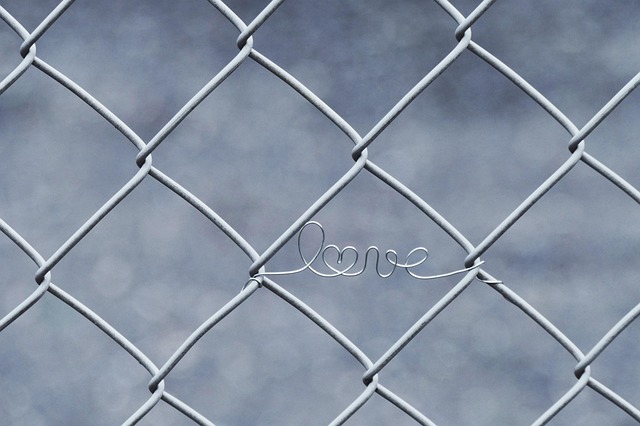Art Doesn’t Speak for Itself—Context is Everything
Art has never existed in a vacuum, but in 2024, the role of context is more obvious than ever. Museums, galleries, and virtual spaces alike are waking up to the reality that a painting or performance can’t explain itself. The story around the work—the who, the why, the when—is just as impactful as the work itself.
That’s where the modern curator steps in. Think less gatekeeper, more cross between editor and storyteller. They’re shaping narratives, not just hanging frames on walls. Bringing in historical references, lived experiences, and underrepresented voices, curators today turn art exhibitions into complete, layered experiences. You’re not just looking at a sculpture; you’re understanding what it meant in its time, what it still says now, and who is (or isn’t) included in that conversation.
Which brings up the big stakes. Curatorial decisions guide how we see the world through art. What gets shown—or left out—builds our cultural memory. That’s power. And in this climate of rapid social shifts and heightened awareness, curators aren’t just making exhibits. They’re making statements.
Once upon a time, a gallery was just white walls and quiet footsteps. Art spoke in silence; labels gave you the facts. That era’s not entirely gone, but it’s fading fast. In its place: immersive storytelling. The kind that pulls visitors into a mood, a moment, or a message—without asking them to whisper or stand still.
Today’s exhibitions are less about static viewing and more about total sensory capture. Think scent, sound, motion-triggered lights. Think spaces that invite you to touch, to walk through, even to contribute. Visitors aren’t just spectators anymore—they’re part of the storyboard. Creators are threading narrative arcs through objects and audio, lighting and layout, to guide people through an experience, not just an idea.
Framing isn’t just a technical decision now—it’s half the artwork. The staging, lighting, and emotional cues shape the interpretation as much as the piece itself. In 2024, the best art shows aren’t hung—they’re built. And they leave you thinking less about what you saw, and more about what you felt.
The Politics of Visibility: What Gets Seen—and What Doesn’t
Every platform decision—what’s featured, who gets pushed on the homepage, which content fills a feed—is a judgment call. This isn’t just algorithmic math; it’s a cultural filter. And in 2024, it matters more than ever. Platforms say they’re neutral, but curation always comes with bias. When content gets elevated, that’s visibility. When it doesn’t, that’s erasure.
Creators are starting to ask tougher questions. Why is certain content routinely sidelined? Who decides what counts as “brand safe”? Audiences want inclusion, not just token slots. Vloggers from underrepresented communities are pushing back—and platforms are getting called out for inconsistent enforcement and vague monetization rules.
Balancing all this isn’t clean or easy, but it’s not optional anymore. If creators want to be seen—and stay seen—they need to understand not just the tech but the tensions behind the screen. Because in 2024, visibility isn’t just about reach. It’s about power.
How Curators Adapt to the Screen-Based Experience
Curators aren’t just caretakers of art anymore—they’re experience designers. With more viewers discovering exhibitions through screens first (and sometimes only), the digital front door has become just as important as the physical one. Adaptation isn’t optional.
Interactive tours, 360° walkthroughs, and high-resolution zoomable works are now minimum entry points. The most forward-thinking curators are planning digital-first collections—exhibits conceived for online browsing as seriously as for in-gallery viewing. Visitors want to engage, not just observe. Annotations, audio guides, and real-time chats with artists bring content to life—without requiring anyone to walk through a museum door.
It’s a new kind of storytelling. The flat rectangle of a screen might seem limiting, but done well, it becomes a portal. The challenge is to balance context with immersion, and keep things honest without losing the magic.
For a deeper dive into where all this is headed, see Are Online Exhibitions the Future?.
From Passive Viewers to Active Participants
The wall between vlogger and viewer is getting torn down. In 2024, audiences aren’t just watching—they’re helping shape the content itself. More creators are opening their process to input, using polls, comments, and open calls to guide what they make next. Think community-sourced storylines, real-time feedback loops, and user-generated challenges. The result: tighter bonds, higher engagement, and content that feels co-owned.
Platforms are playing into this. Features like community tabs, livestream Q&As, and collaborative playlists reward creators who treat their viewers like partners instead of spectators. Some vloggers are even shifting their role entirely—from presenter to facilitator. They’re spotlighting fans, curating shared moments, and blurring the line between creator and community.
The more vloggers lean into this two-way dynamic, the more resilient their channels become. It’s not just about broadcasting anymore. It’s about showing up—and letting others shape what happens next.
Redefining the Modern Exhibition Space
The way we experience art and culture is shifting rapidly. As technology becomes more accessible and audiences more global, exhibitions are evolving far beyond traditional gallery walls. In 2024, expect a reimagining of what exhibitions can be—guided by innovation, ethics, and adaptability.
Smarter Spaces: Integrating AI and AR
Exhibitions are no longer static. Emerging tech is transforming the visitor experience:
- AI in Exhibition Design: Artificial intelligence is being used to personalize the path a viewer takes through a gallery, recommend related works, and even analyze visitor behavior to improve curation.
- AR Overlays: Augmented reality adds interactive layers to in-person and virtual shows. Visitors can scan works with their devices to unlock hidden elements, artist commentary, or immersive storytelling.
- Beyond Passive Viewing: The goal is engagement—tech is helping creators turn exhibitions into experiences.
Ethical Curation: Representation Matters
As exhibitions reach broader audiences, the stakes are higher for responsible storytelling.
- Global Diversity: Institutions and curators are being pushed to better represent underrepresented voices, especially from the Global South and Indigenous communities.
- Cultural Context: Ethical curation includes acknowledging historical context, avoiding tokenism, and collaborating with artists as co-authors of the narrative.
- Who Tells the Story?: Transparency and shared authority in exhibition narratives are becoming essential parts of the process.
Formats That Flex: New Exhibition Models
The definition of “gallery space” is becoming fluid. Creators and curators are embracing alternative formats to reach audiences where they are.
- Pop-Up Exhibitions: Temporary, site-specific shows bring art into the public or unexpected places, increasing accessibility and reducing costs.
- Hybrid Events: Combining physical installations with virtual extensions allows for broader reach and layered engagement.
- Virtual-Native Galleries: Entirely digital exhibition spaces—often built in VR or interactive web environments—allow for experimental designs and global accessibility.
Flexibility is not just a trend—it’s a response to the art world’s growing need to meet audiences on their terms, while preserving depth, context, and impact.
Curators Aren’t Gatekeepers—They’re Cultural Translators
Curation used to mean picking what made the cut. Now it’s about making meaning. Online, in galleries, or on the timeline, curators aren’t filtering—they’re framing. They translate culture, connect dots, and show people what matters before they even know how to ask for it. Every choice sends a signal. Every display tells a story.
In vlogging, this shows up in how creators select what to show, how they stitch it together, and the lens they give it. A grocery haul isn’t just what’s in the bag—it’s about how that bag fits into a lifestyle, a worldview, a vibe. The audience picks up on it instantly. Intentionality is everything.
And curatorship? It’s not behind the curtain anymore. It’s front and center. Whether it’s designing a thumbnail, sequencing clips, or layering music that sets a mood—these aren’t just aesthetic calls. They’re cultural ones. And the ones doing it well are the ones defining what vlogging even is in 2024.

 Johner Hazardics brought essential structural and technical support to FLP Emblemable, assisting in the development of its layout, functionality, and user-focused features. His dedication to smooth performance and intuitive design helped the platform grow into a reliable and engaging space for artists and enthusiasts alike.
Johner Hazardics brought essential structural and technical support to FLP Emblemable, assisting in the development of its layout, functionality, and user-focused features. His dedication to smooth performance and intuitive design helped the platform grow into a reliable and engaging space for artists and enthusiasts alike.